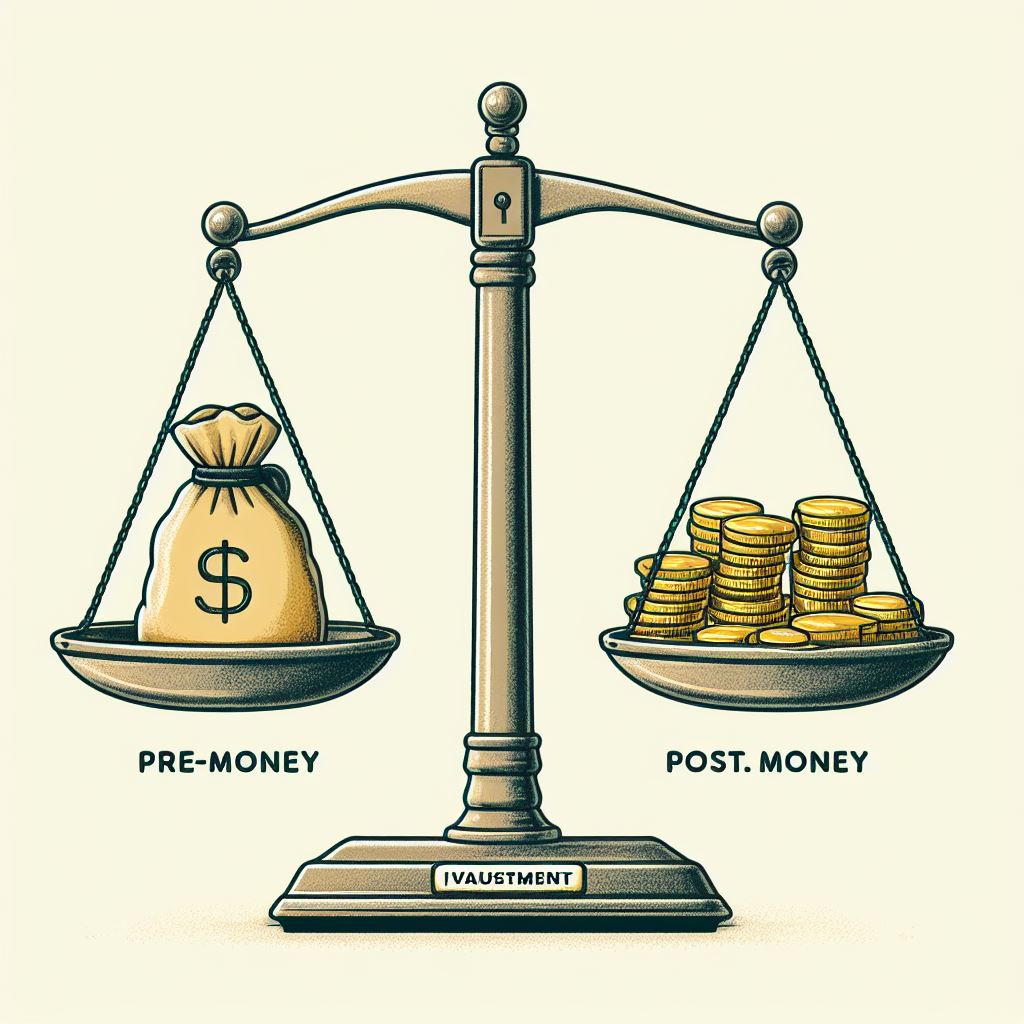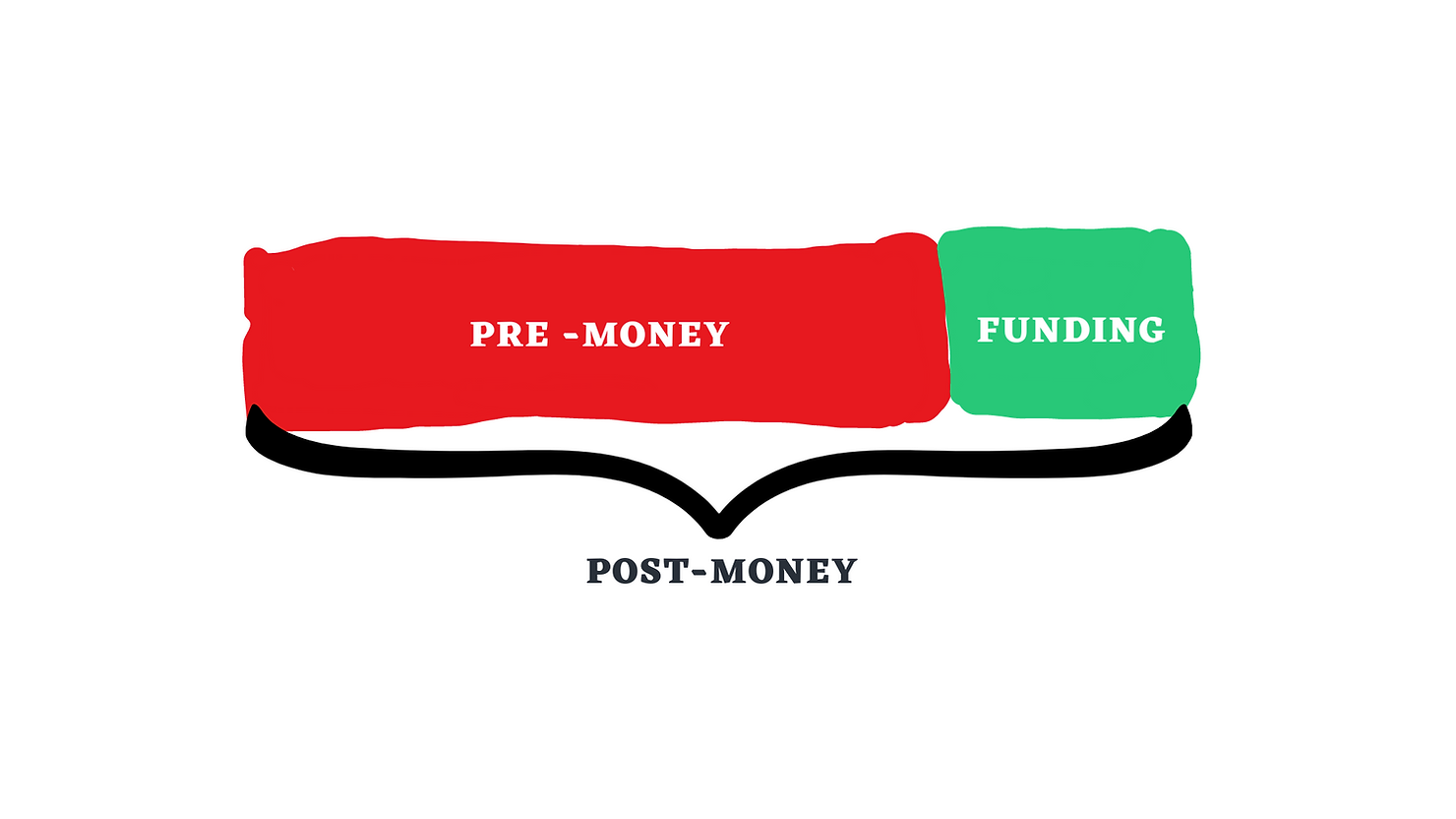In startup and VC world, two terms will be ringing in your ears non-stop: pre-money and post-money valuation. These are more than cliche startup jargon; they are pivotal in determining the future of a startup and the wealth of its founders and investors. But what do these terms really mean, and why are they so critical in the financial orchestration of startup growth?

These terms may sound intimitading at first but don’t despair, they are indeed basic terms and will feel self explanatory once you understand the meaning behind.
While looking for funding you will need to agree on a valuation with your venture capital or angel invesotor based on preferred valuation tecnique. When you receive the funds from your investor, cash deposited in your bank accounts increase thus the value of your company increases equal to the amount of money received. The company has more assets including the new cash and cash assets contributes directly to value of the company.
Post-Money Value = Pre-Money Value + Financing Raised

The value of your company prior to raising financing is called pre-money valuation and the value after raising financing is called post-money valuation.
If you agree for a 500k USD financing round over 2.5M USD pre-money valuation; your post-money valuation becomes 3M USD.
You should be aware of how the financing would dilute your shares because as the company is increasing in value your ownership is diluted which is further explained in article “What is dilution and how does it effect existing shareholders?”
Pre-money and post-money valuation is simply a mathematical expression but during your talks with VCs and in your pitch deck you should be clear if you are discussing on the post-money or pre-money valuation. As long as you and VCs are using the same terms you should be safe.
In the video below that’s describing dilution you may also see how your company valuation is affected with investment pre-money and post money.
